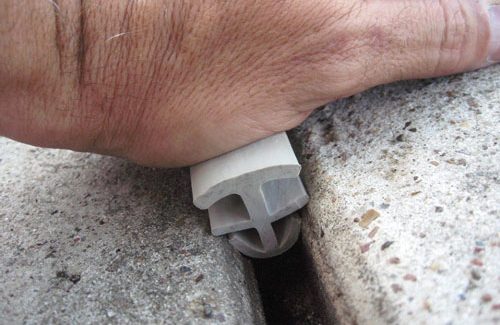When you are getting a new driveway, it is important to plan on joints between the sections of concrete. These sections are typically filled with a concrete driveway joint filler. This product creates a stable surface and allows the concrete to expand and contract as the temperature changes each day. Concrete can expand because of water intrusion or heat. When water leaks into the concrete, it fills the space between the solid particles. It can push the particles apart, causing expansion. This movement also causes cracks. If the temperature drops below freezing, the water itself expands. This hastens the cracking process and can lead to potholes, pitting and deep cracks.
Another way that concrete expands is with heat. The difference between overnight low temperatures and daytime high temperatures can be considerable, especially if the concrete has direct sunlight. The surface temperature of the concrete could easily increase by more than 50 degrees Fahrenheit in a few hours. Any moisture from overnight condensation or rain showers could also play a role in expansion during the heating of the day.
The concrete expansion joints accommodate the typical amount of expansion and contraction that is expected in a given volume and surface area of concrete. Driveways typically have both vertical and horizontal expansion joints, especially if they are made for two or more cars to sit side by side.
The expansion joints may capture a lot of debris if there is no concrete driveway joint filler between them. This filler allows the concrete to expand and contract. Over time, it can disintegrate, crack or break away. The sun’s energy, wind, rain, ice and snow are the usual causes of this. Power washers can also damage the filler. Replacing the filler protects the concrete and ensures that the expansion joint remains neat and tidy. To learn more about concrete driveway joint filler, visit Trim-A-Slab.com







